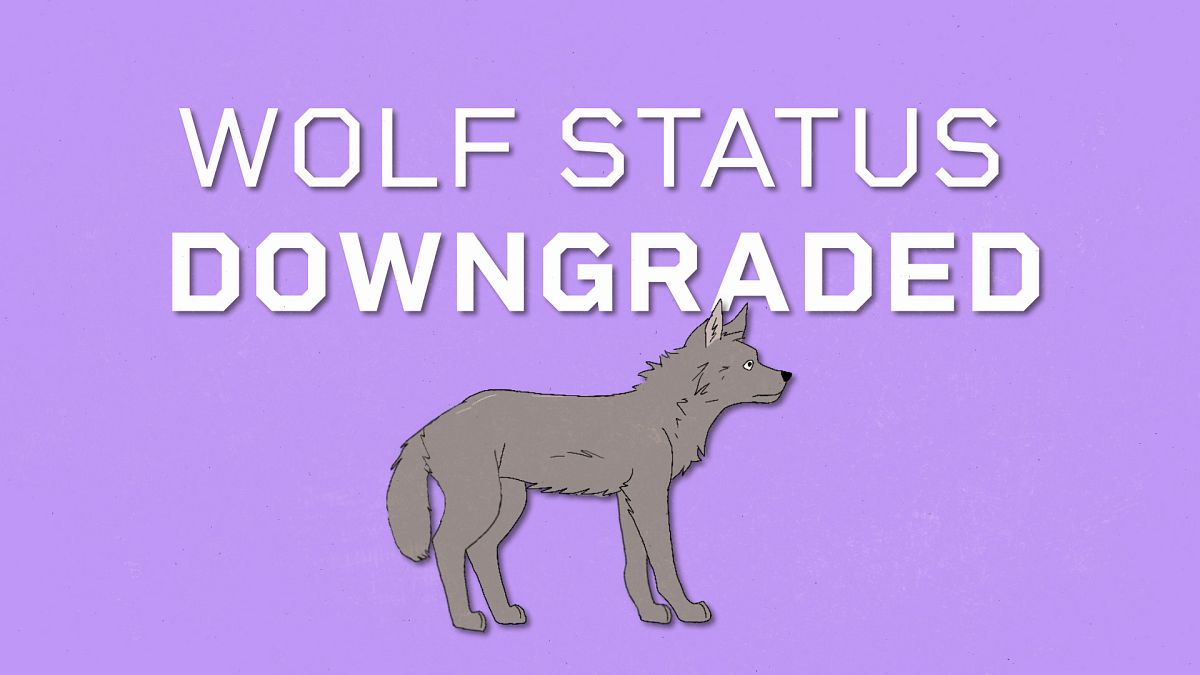In this episode we ask why the EU is determined to reduce the protected status of wolves, a species almost extinct in this part of the world about a century ago.
Wolves are now present in almost all EU countries and their numbers have increased from 11,000 in 2012 to more than 20,000 last year. Italy, Bulgaria, Romania and Spain have populations of more than 2,000.
The species that was almost extinct in the mid-20th century recovered after being granted strict protection status by the Council of Europe’s Berne Convention in 1982 and the EU Habitats Directive in 1992.
But farmers in some EU Member States called for a review of the conservation status of wolves, and in late 2022 the European Parliament called for their status to be downgraded from ‘strictly protected’ to ‘protected’.
The European Commission subsequently proposed the change, a move that was approved by European governments this month, paving the way for a change to the EU’s Habitats Directive.
“A strictly protected species cannot be hunted, but a protected species can, which agricultural lobbies and hunters consider necessary. Environmental groups, on the other hand, are now concerned that there is overhunting and that the population growth we have seen since the Berne Convention came into force will be reversed and we will begin to lose wolf populations across Europe,” says Robert Hodgson, who covered the legislative process for Euronews.
Wolves versus livestock and science versus politics
According to EU data, wolves kill around 65,500 head of livestock annually. The majority, around 73%, are sheep and goats. Given that there are 60 million sheep across the block, they represent the death of just 0.065% of that livestock.
“This was actually a politically motivated decision because in 2022 Switzerland made a proposal to the Standing Committee of the Berne Convention to reduce the protected status of wolves and at that time the EU was clearly saying that this was not based on any scientific evidence or conservation reasons,” claims Sabien Leemans, Director of Biodiversity at WWF.
The EU collects data on wolves every six years and more is expected in 2026, but the centre-right European People’s Party (EPP) group in the European Parliament, which has the largest number of MEPs and strongly supports the agricultural sector, says there is sufficient evidence.
“I think it is actually a decision based on scientific data, as the global wolf population in Europe has recovered. And this can also be seen as a success of the (Habitats) directive, because after the introduction of the directive in 1992, the wolf went from practically extinct to more than 25,000 animals,” says Italian EPP MEP Herbert Dorfmann, member and group coordinator on the Parliament’s agriculture and rural development committee.
Ahead of its proposal, the Commission gathered data and surveyed public opinion, finding that 70% of respondents said they were against reducing the protected status of wolves.
The Spanish government was one of the least willing to change the legislation and Euronews went to hear the opinions of some people in Madrid.
“The wolves cannot be allowed to overpopulate and that must be controlled, whether animal rights activists like it or not,” said one interviewee. “I think it’s wrong that they’ve reduced the protection of the wolf, because the wolf is a very Spanish symbol and I think it will do its job within the ecosystem,” said another.
There have been no reports of wolves attacking humans in Europe over the last half a century, but peaceful coexistence clearly remains a challenge outside conservation reserves. Whether this measure helps to create harmony between man and beast remains to be seen.
Watch the video here!
Journalist: Isabel Marques da Silva
Production: Pilar Montero López
Video production: Zacharia Vigneron
Graphism: Loredana Dumitru
Editorial coordination: Ana Lázaro Bosch and Jeremy Fleming-Jones
Read the full article here


